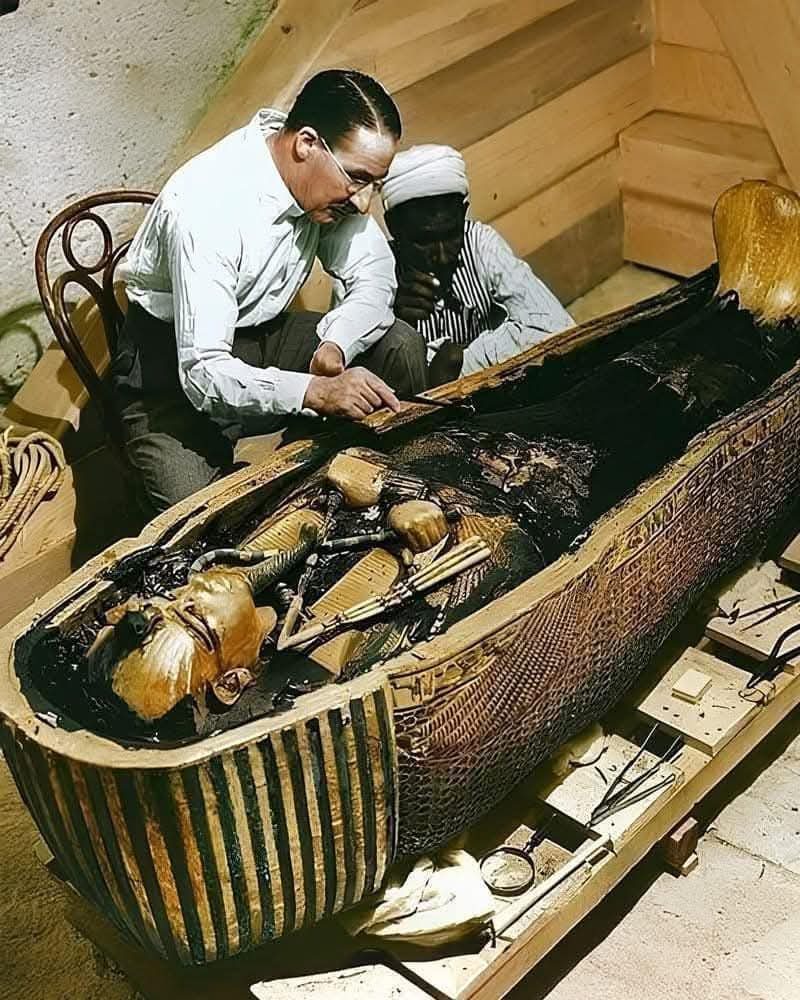
The tomb of Tutankhamun was discovered in the Valley of the Kings on 04 November 1922 by excavators led by Egyptologist Howard Carter, more than 3,300 years after Tutankhamun’s death and burial. On 4 November a worker uncovered a step in the rock. According to Carter’s published account the workmen discovered the step while digging beneath the remains of the huts; other accounts attribute the discovery to a boy digging outside the assigned work area.
The step proved to be the beginning of a tomb entrance staircase. Watch video:
https://www.ganjingworld.com/video/1gt6o6kacoa2SQx4bsKYbSPGm1851c
When Carter’s patron Earl Carnarvon asked here’s what Howard Carter said when he found the tomb: “Can you see anything?” Carter replied: “Yes, wonderful things!” Carter had, in fact, discovered Tutankhamun’s tomb.
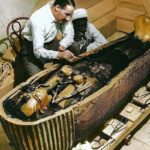
The tomb was then secured, to be entered in the presence of an official of the Egyptian Department of Antiquities the next day.
Tutankhamun’s burial rites were elaborate and followed traditional ancient Egyptian practices, with some unique twists due to his youth and status.
A – Preparation:
- Mummification: After death, Tutankhamun’s body was mummified to prevent decay. His organs, including his brain, were removed and preserved separately.
- Wrapping: His body was wrapped in linen bandages, often coated with resin to help preserve the body further.
- Amulets and jewelry: Protective amulets and precious jewelry were placed within the wrappings to ensure the pharaoh’s safety in the afterlife.
B – Burial։ - Golden coffin: Tutankhamun’s mummified body was placed within a golden coffin, which was itself placed inside a series of nested coffins.
- Sarcophagus: The coffins were then placed within a stone sarcophagus, adorned with images of gods and goddesses.
- Treasures: The tomb was filled with treasures, including furniture, jewelry, and other funerary objects, to provide for the pharaoh’s needs in the afterlife.
C – Rituals: - Opening of the Mouth: A ritual was performed to restore Tutankhamun’s senses and faculties in the afterlife.
- Weighing of the Heart: The pharaoh’s heart was symbolically weighed against the feather of truth to determine his worthiness for the afterlife.
- Funerary procession: A grand procession carried the pharaoh’s body to the tomb, accompanied by priests, officials, and other mourners.
D – Tomb: - Layout: The tomb consisted of multiple chambers, including an antechamber, treasury, and burial chamber.
- Wall paintings: The walls were adorned with vivid paintings depicting scenes from Egyptian mythology and the pharaoh’s life.
- Sealing: The tomb was sealed, with the entrance hidden behind a wall, to protect the pharaoh’s treasures and ensure his safe passage into the afterlife.
These elaborate burial rites reflect the ancient Egyptians’ deep reverence for their pharaohs and their belief in an afterlife.
Today the discovery remains the most famous find in the Valley of the Kings and Tutankhamun the best-known ruler of ancient Egypt. The tomb and its treasures are key attractions for Egypt’s tourist industry and sources of pride for the Egyptian people.


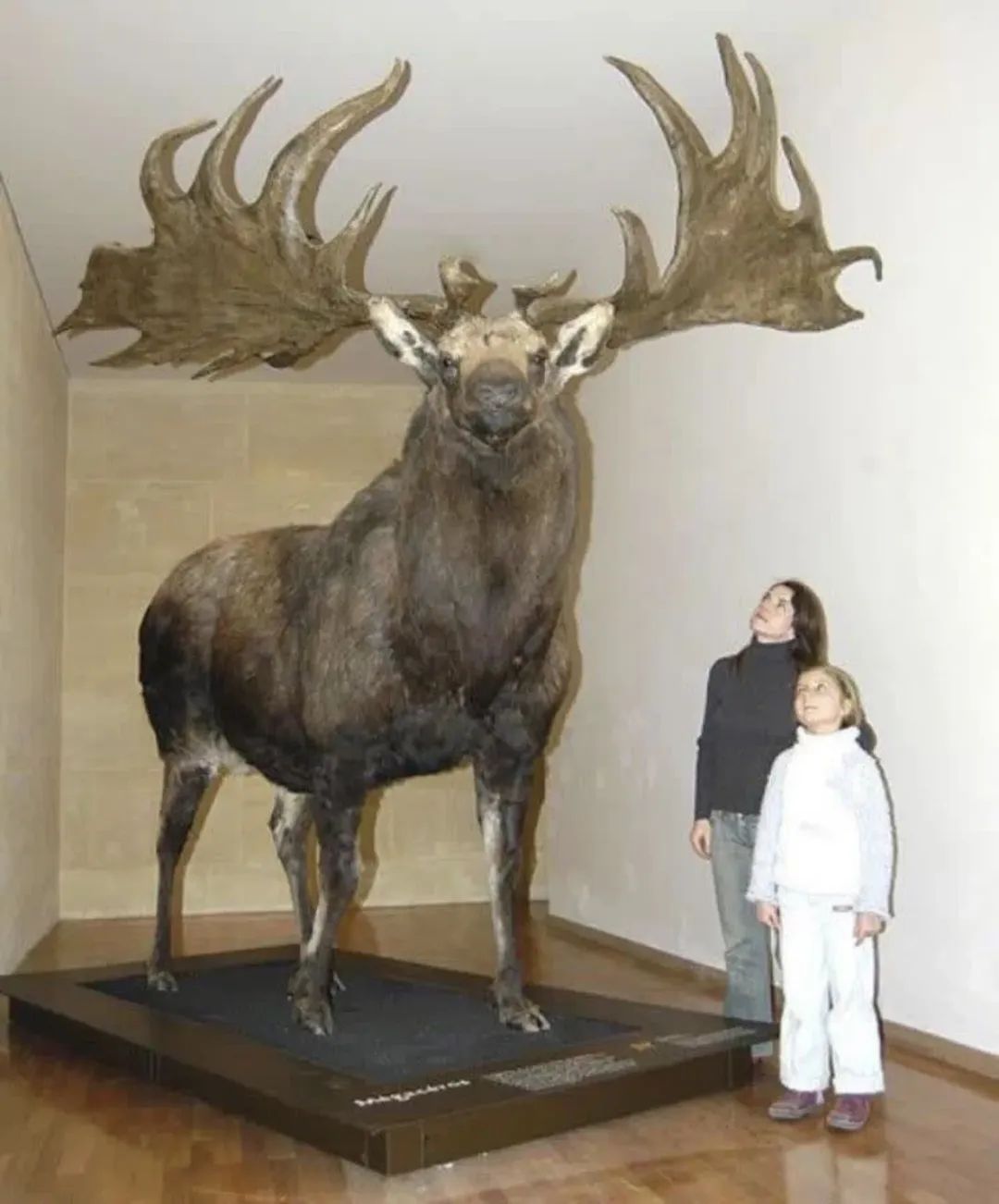
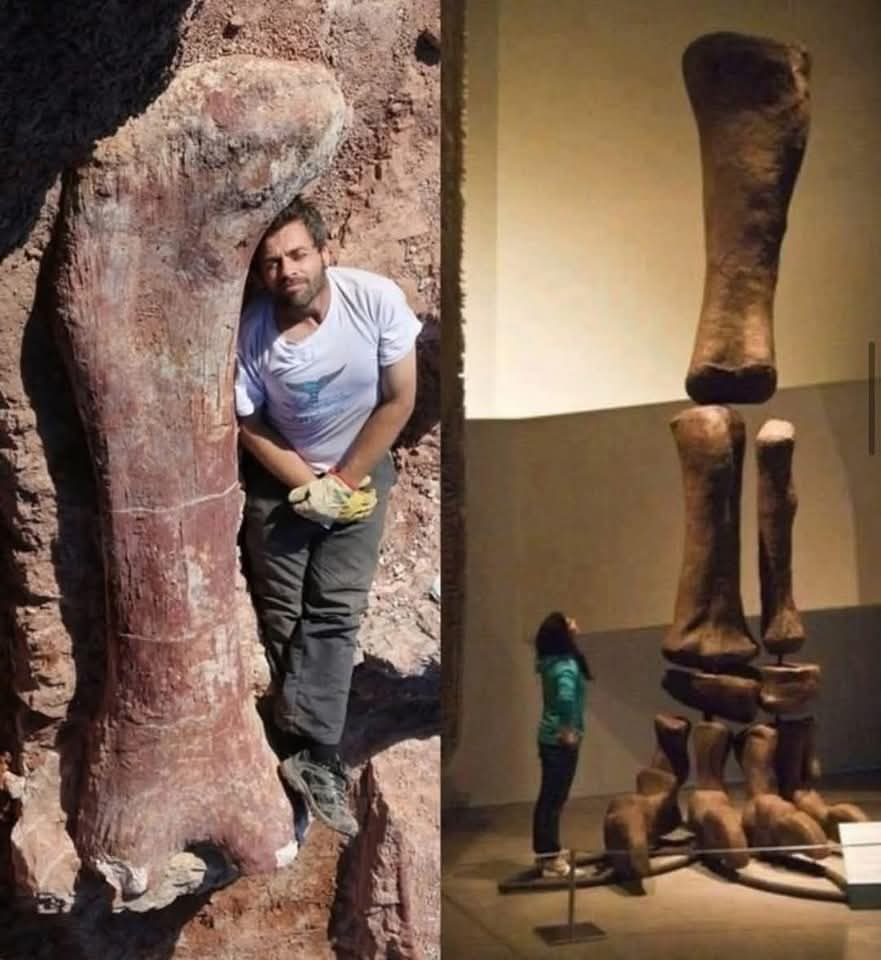


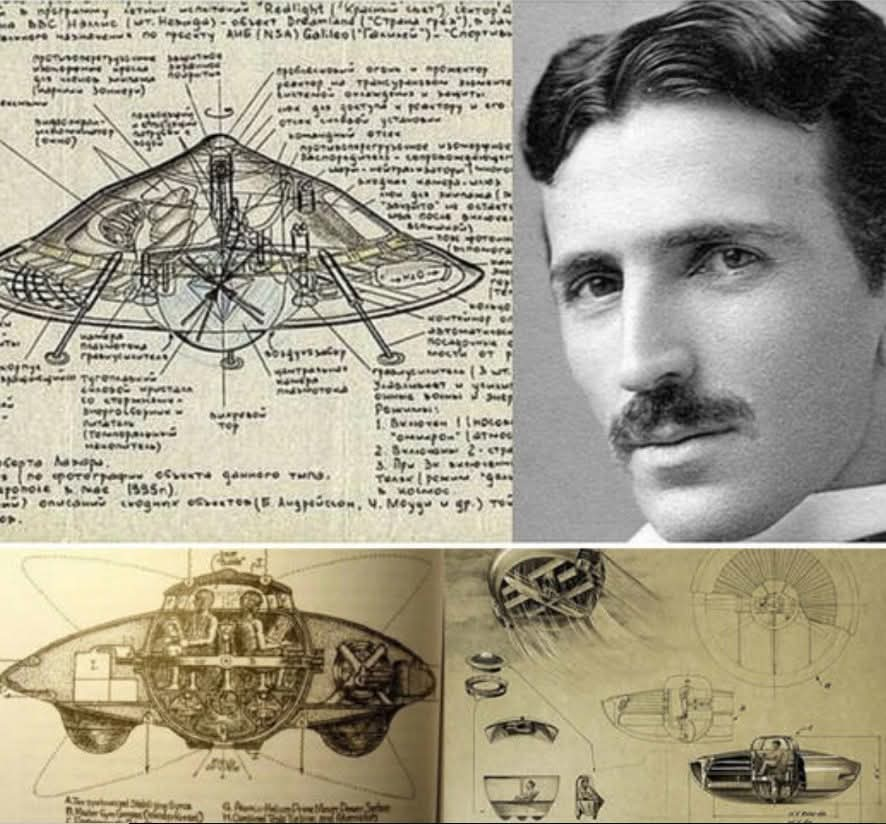
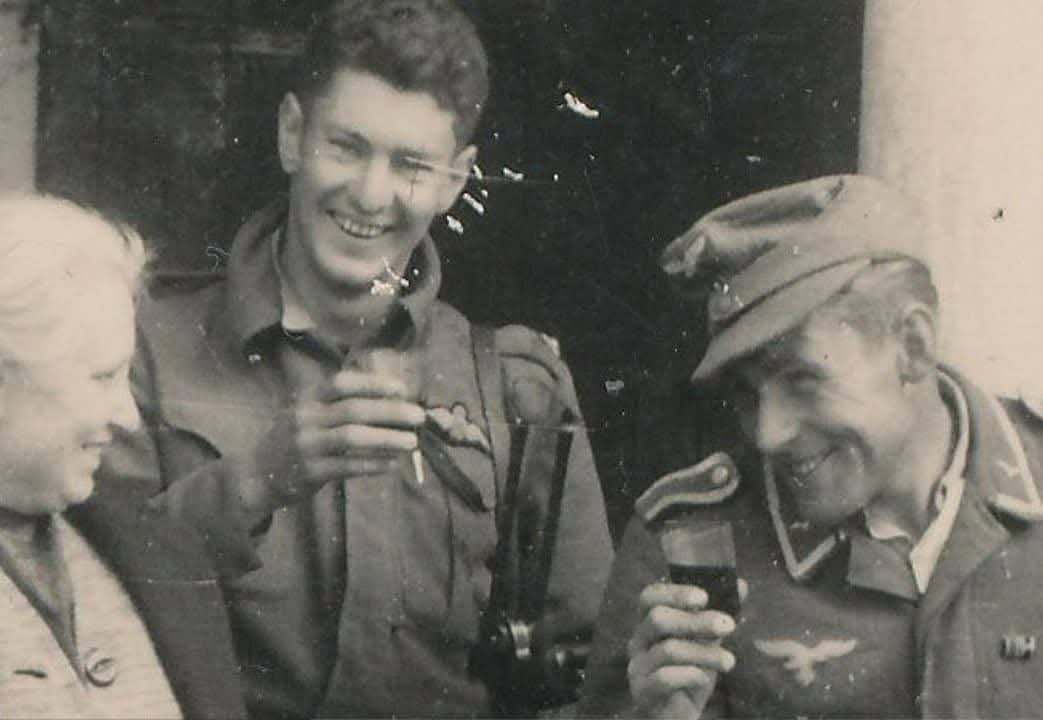
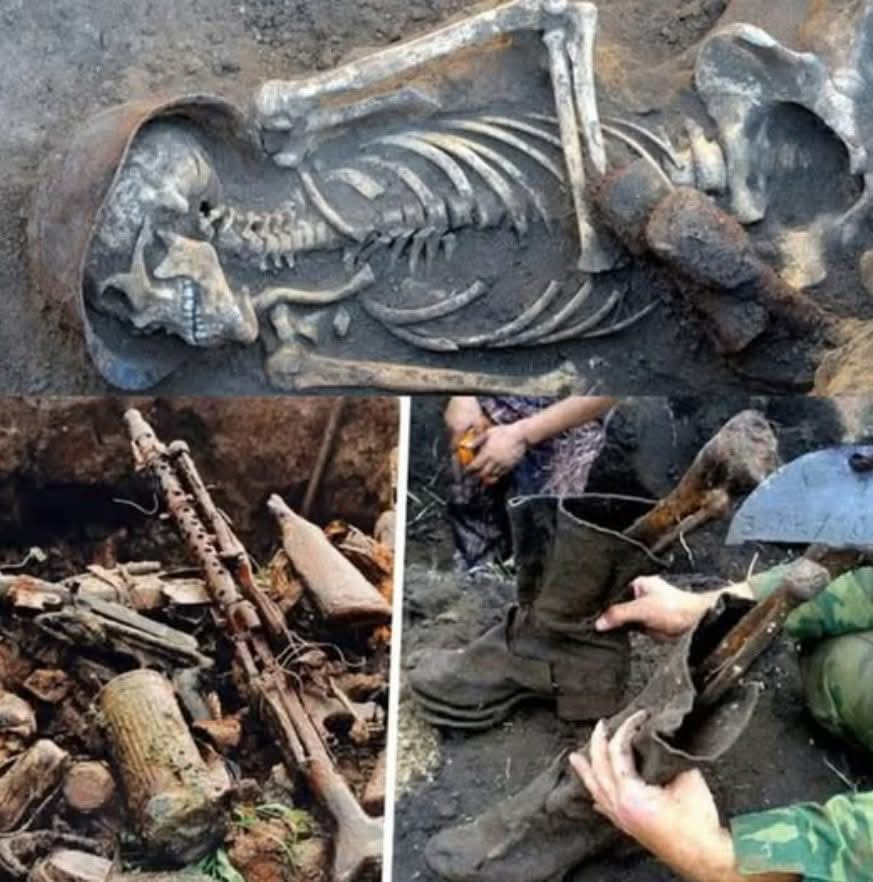
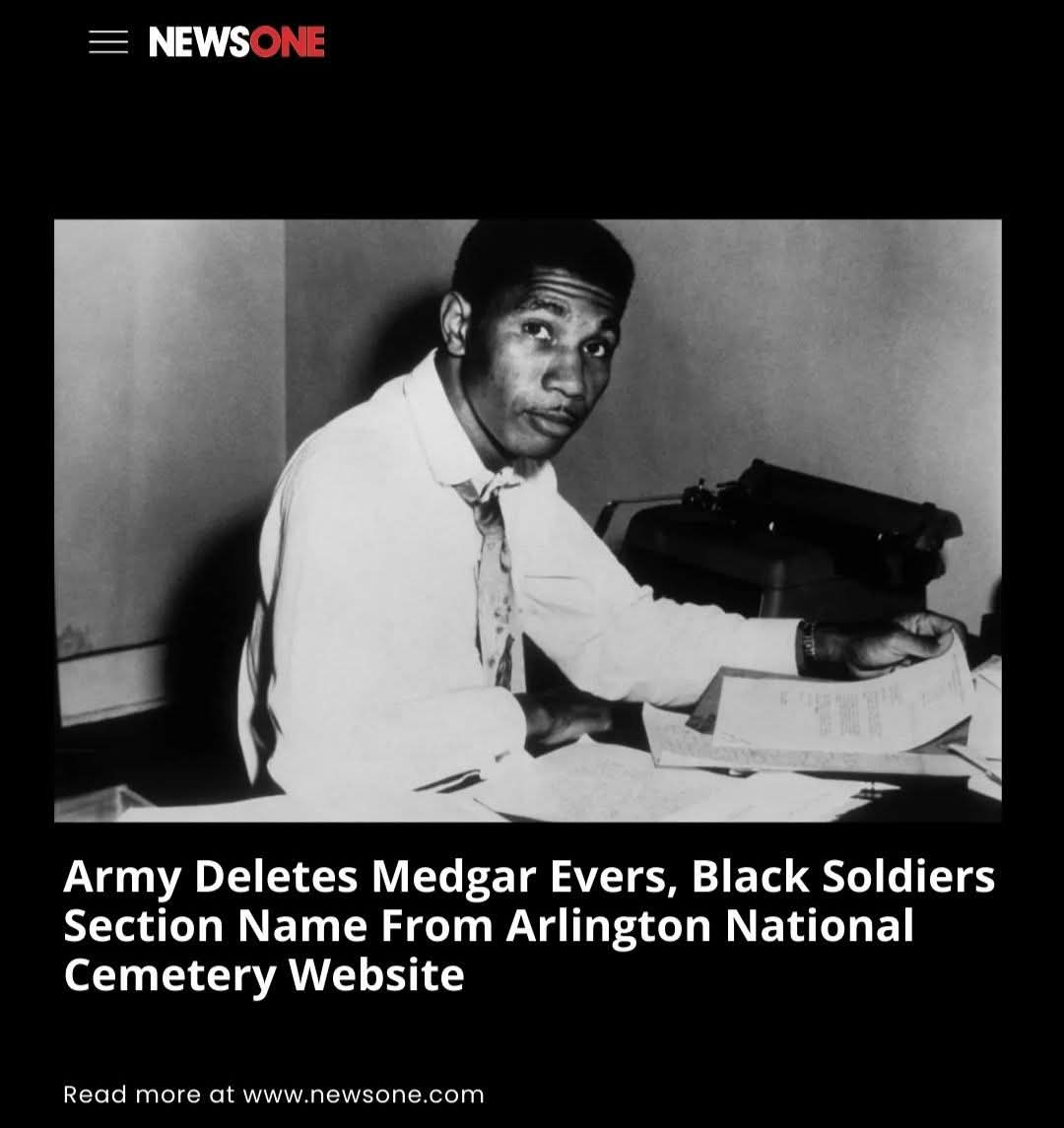
Leave a Reply